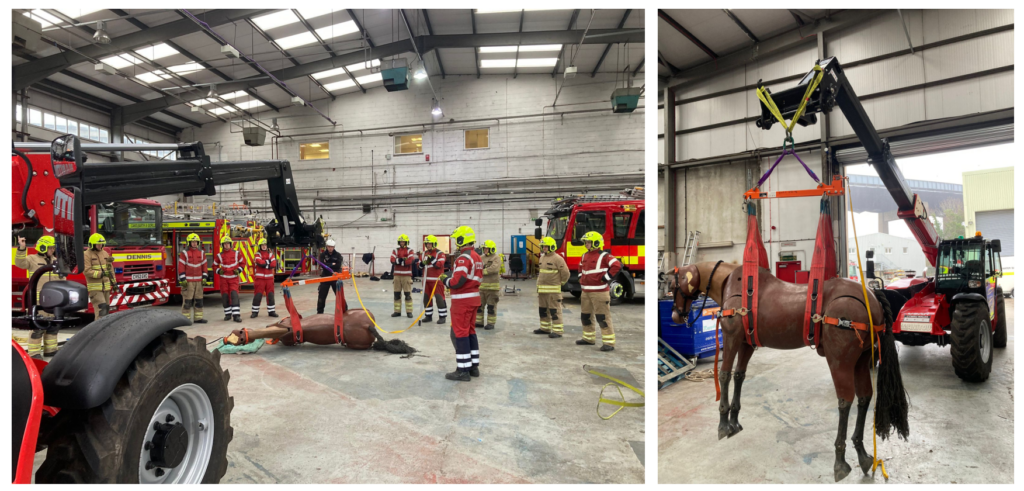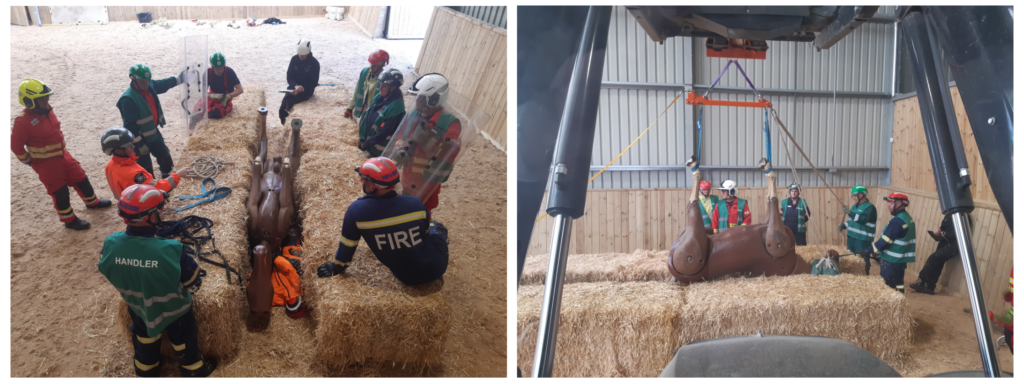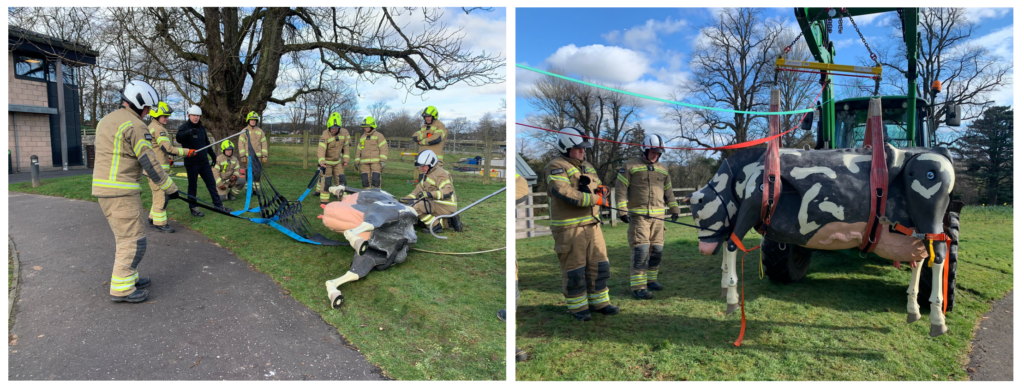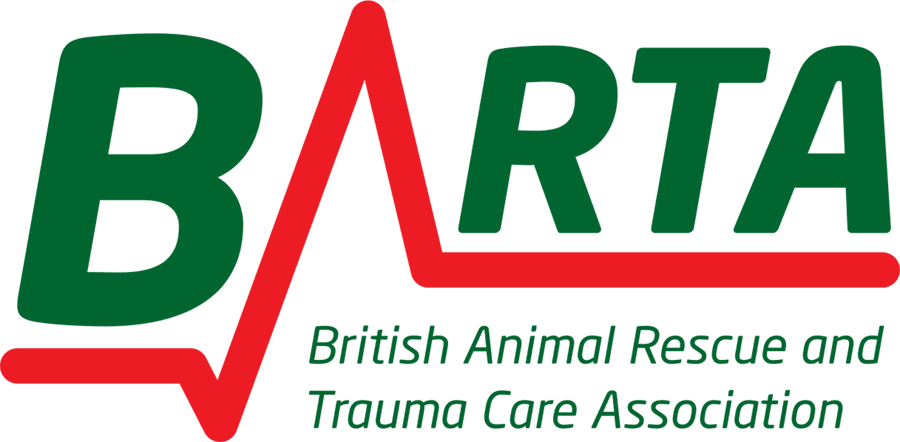BARTA Lifting Philosophy
© BARTA 2023
Philosophy regarding choice of large animal rescue techniques
Large animals often require moving for medical or safety reasons. Some of the many factors to consider when planning the movement of compromised large animals include the anatomical, physiological and behavioural features of the animal, the environment that surrounds the incident, the context in which the animal is kept and the expertise and equipment capabilities which may be bespoke to the animal involved.
Animal keepers and event organisers who may expect to deal with the foreseeable movement of recumbent animals should be suitably equipped in relation to the known species and the expected movement pathways and destinations.
First responders attending incidents involving animals must prepare as best as possible for the situations most likely to be encountered. Adaptation and choice of methods must be considered jointly through consultation between an animal rescue team leader or tactical advisor and a suitably qualified veterinarian or verifiable species expert.
Assessment of viability followed by a judgement that the movement of an animal is justifiable on the basis of safety and welfare is paramount and compatible with the expectations of animal welfare and health and safety legislation.

When choosing a method, the following should be considered;
- Is the proposed method an agreed technique and appropriate for the species involved?
- Are there circumstances which require adaptation of an agreed method?
- Is there appropriate veterinary triage, assessment and supervision available on scene?
- Are there any medical or welfare considerations that might preclude a chosen method?
- In the hierarchy of rescue techniques, can a simple low-tech solution be utilised?
- Will chemical control measures be available and suitable and sufficient for the plan?
- Can the animal rescue lead be confident that the rescue method promotes a casualty centred and safe rescue where benefits outweigh risks?
Since the inception of agreed manual manipulation methodology, the majority of large animal rescues are now undertaken using one or a combination of these techniques, often in conjunction with a rescue glide.
In some circumstances, following assessment and wider understanding or situational awareness, the use of powered mechanical advantage or lifting may be the preferred option.

When considering lifting or winching a large animal, the following guidance is offered:
- In accordance with Welfare of Animals (Transport) (England) Order 2006 the use of mechanical lifting equipment must be utilised under strict veterinary supervision (unless following a DRA human life saving actions take precedence)
- In addition, any equipment used to restrain, recover or lift an animal must be quick releasable
- Mechanisms for lifting should be suitable and capable of completing the task with due consideration and appreciation of the hazards associated with a live load
- Preferred options for lifting include purpose made gantry cranes within animal housing/veterinary hospital, sufficiently rated vehicle mounted cranes such as a Hiab/Palfinger, or a sufficiently rated telescopic handler
- Less suitable equipment but acceptable within strict control measures when no alternatives are available in a reasonable timeframe are; tractors with front end loaders or fire and rescue service bipods and tripods
- Tractors with front end loaders are less suitable than those with telescopic reach due to the proximity of the load to the vehicle (particularly when on an incline) and the distance the vehicle must be to the entrapment site or casualty animal in order to lift.
- Tractors with front loaders are however, perfectly suited to performing a combination lift and skid where mechanical advantage is required
- Where utilising lifting machinery from an outside provider, stricter control measures should be employed in the management of risk when working around the unknown operator.
- In addition, at all times, lifting harnesses and systems to attach to the lifting device should be provided by the FRS or trusted entity
- Whilst bipods and tripods should not be discounted, they will not normally form a “go to” tool for large animal rescues.
- Tripods have the ability to lift vertically but do not have the ability to move the animal to a place of safety
- They may be utilised to lift a medically recumbent animal which needs assistance to stand, as long as a quick release element forms part of the suspension attachment and sufficient height is achieved following assessment of the casualty
- However, any unfamiliar equipment or structures in close proximity to a compromised large animal may cause anxiety and unwanted behaviour, therefore these pose more of a risk than traditional mobile lifting devices
- Bipods do have the ability to traverse an animal in a single direction, however the following must be accounted for if using this method;
- Large animals must be raised clear of the ground as quickly as possible
- If they can reach the ground at any point during the lift, sensing freedom is likely to cause an animal to scrabble or bolt in any direction which will apply unpredictable forces to anchors
- Lifting with a bipod will require a sound practical knowledge of the animal’s height and sufficient structural height to account for the torso, harness and quick release system
- Lifting with a bipod should normally only be carried out with robust chemical control and under strict veterinary and experienced animal rescue team leadership and supervision
- Stimulation of the lift, coupled with relatively slow winching speed and inability to reconfigure the position of equipment in a timely fashion are all cautionary aspects when proposing to utilise these types of devices
BARTA Large Animal Working Group – Lifting Project 2023/24




